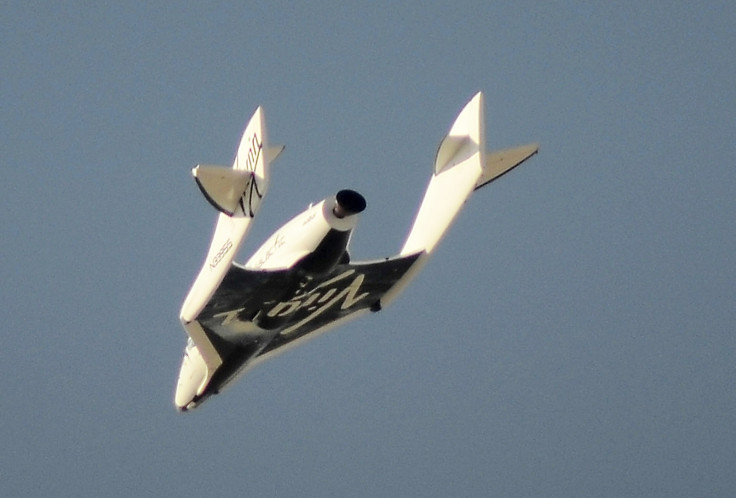Virgin Galactic's VSS Unity completes sixth test glide, lands with 1,000 pounds of water
Unity completed a "dry run" for future rocket-propelled flights by carrying all propulsion components on board.

Following a number of ground-based tests and installation activities, Virgin Galactic's reusable suborbital spaceplane, VSS Unity aka SpaceShipTwo, completed its sixth test glide on 4 August. The test, conducted in Mojave, came as a "dry run" for the aerospace company's upcoming rocket-powered flights.
Helmed by pilots Dave Mackay and C J Sturckow, Unity took to the skies with all propulsion components on board, including a forward pressurant tank loaded with helium, fully charged main oxidiser tank filled with nitrous oxide, and ballast tank filled with 1,000 pounds of water, which simulated the weight of solid fuel casing, or Case-Throat-Nozzle (CTN).
Unity's mothership VMS Eve carried the spaceplane to an altitude of 40,000ft before dropping it. Once the separation process was complete, the pilots used the descent to conduct remaining tests, including a high-g pull-up manoeuvre and bank-to-bank rolls. Finally, in a new move, they did not jettison the ballast tank and tested how the spaceship lands when carrying heavier weight centred towards its back.
Soon after completing the test, chief pilot David Mackay said: "We are really pleased with what we saw today. We collected hundreds of gigabytes of data for us to review, and from the pilots' point of view, it felt really wonderful. All of you here at Virgin Galactic and The Spaceship Company should be very proud: VSS Unity is a great spaceship!"
Virgin Galactic wants to use VSS Unity to fly passengers into suborbital space and has already got a number of customers. But, this is not their first attempt to achieve the ambitious goal. Back in 2014, the original vehicle from the aerospace company, VSS Enterprise, suffered a poor fate when it broke up during a powered test-flight and crashed into the Mojave Desert.
A report by the National Transportation Safety Board later revealed the spacecraft crashed due to early deployment of its feathering system - a process of moving the plane's wings to increase drag during re-entry. Unity still uses the feathering system, but with additional safety features in place to prevent another crash.
There's no word on the number of tests Virgin Galactic plans to conduct before a full-fledged flight. In an October 2016 interview, the company's president, Mike Moses said: "There's 10 glide flights' worth of targets. We could do those in 8 flights, or it might take 15, but we're not going into the next phase before we clear those."
© Copyright IBTimes 2025. All rights reserved.





















